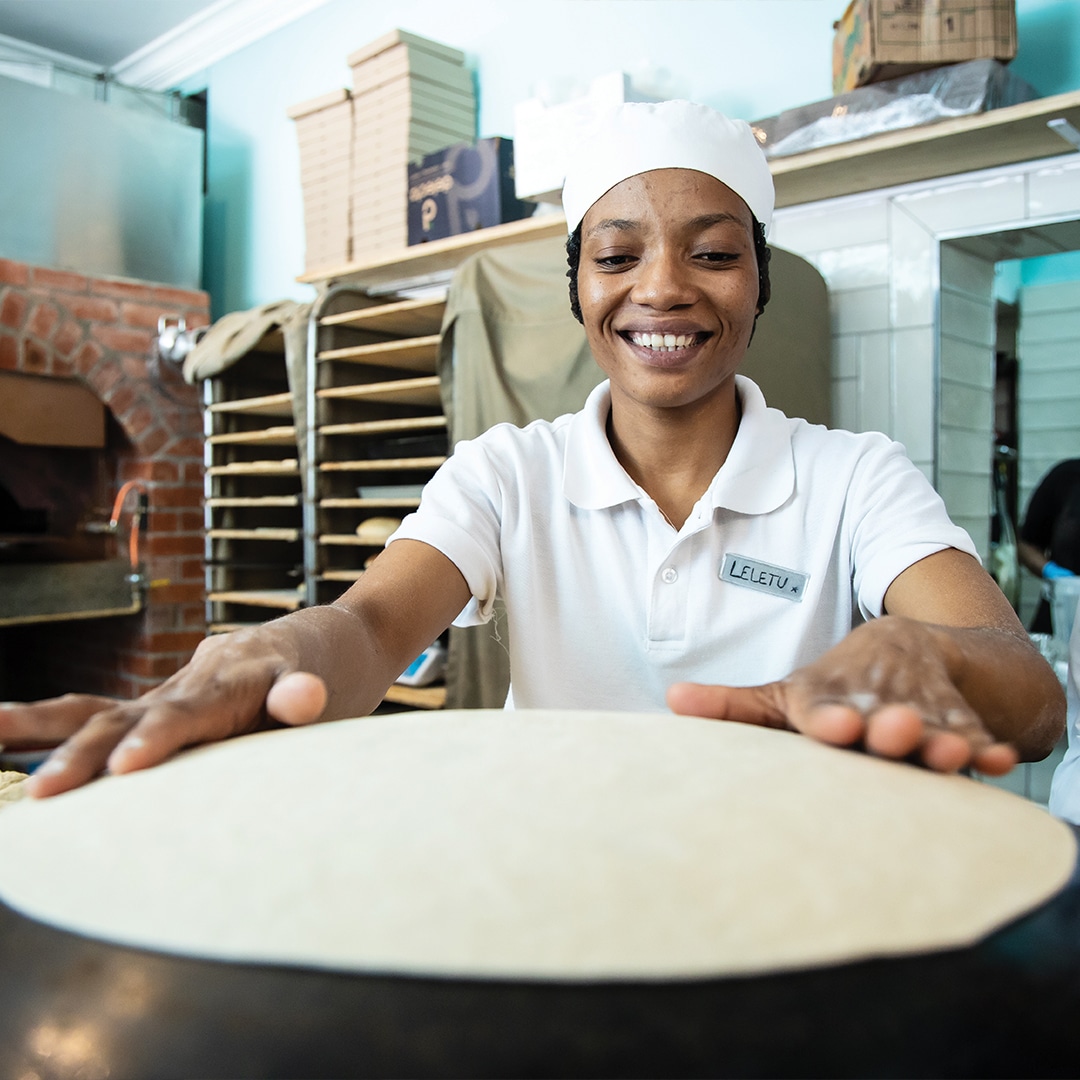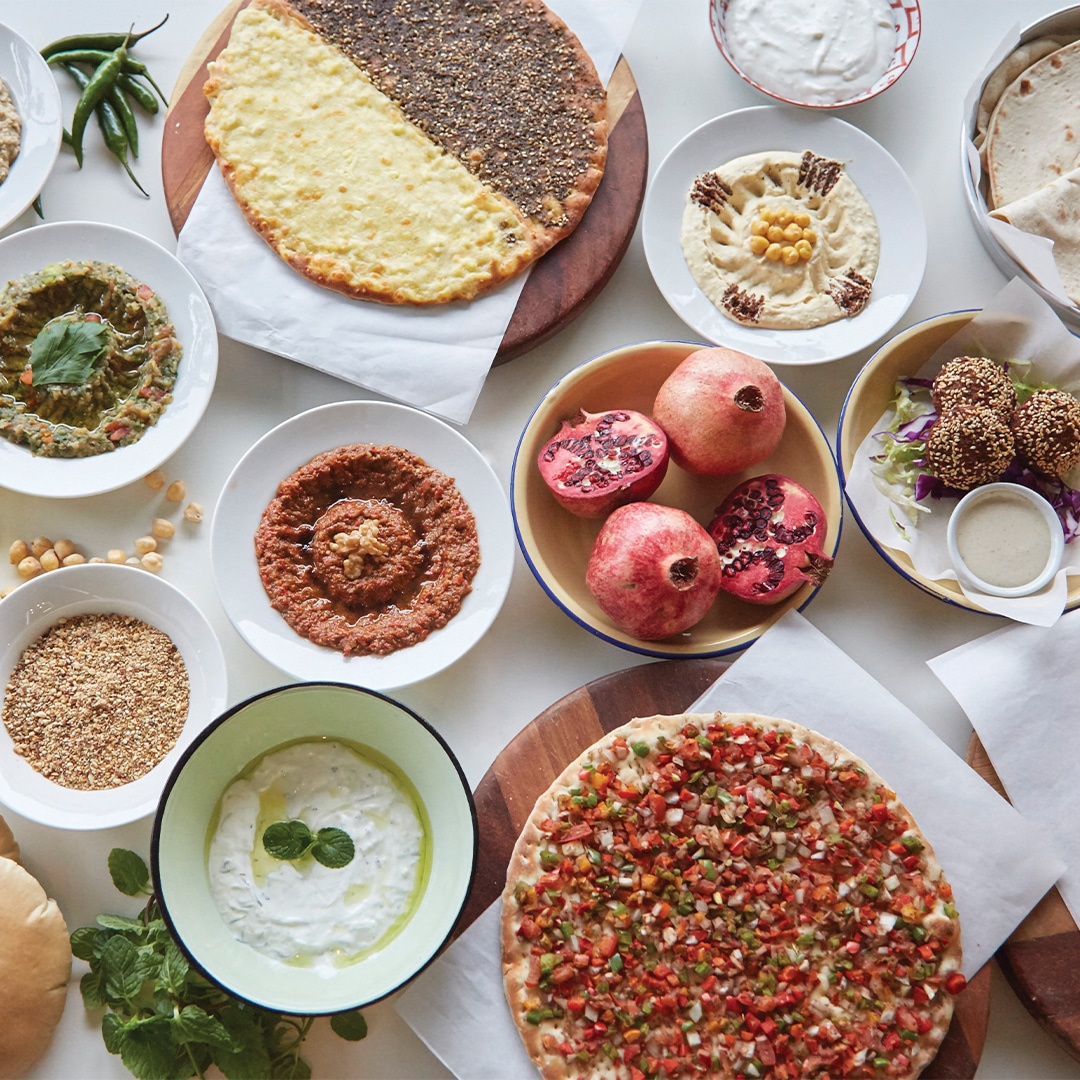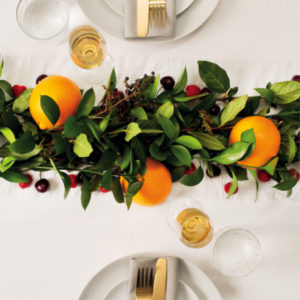There are so many facets to Lebanese cuisine, so we sat down with chef Clara Bubenzer from The Lebanese Bakery for a basic introduction to the must-tries and must-tastes to get acquainted with it.

The ingredients
For Chef Clara, Lebanese cuisine rests on fresh ingredients of quality. It has an honest style, meaning there is minimal cooking, so ingredients have to be able to stand tall with minimal intervention, she explains. Besides that, these are some pantry staples she recommends:
- Olive oil: I personally prefer a strong, grassy olive oil that announces itself. It’s something you shouldn’t skimp on.
- Spices: Rather buy less of a spice more often. They are essential. Spices lose their punchiness over time, so rather chuck them since they’re cheap.
- Garlic
- Sumac: This spice has a tart, citrusy flavour and is made of the ground red berries of the sumac plant.
- Pomegranate molasses: This is a key flavour that’s hard to replicate, so get a small bottle to start off with.
- Za’atar: A spice mix of dried oregano, thyme, sumac and toasted sesame seeds.
Making a mezze spread
A good spread should have a variety of dips, some meat options and definitely breads to scoop it all up. Serve in small bowls and plates to pass around- its really suited to any occasion. This is Clara’s ideal spread:
- Hummus: It’s delicious as is but is also a blank canvas that can be coloured in with tasty things such as chilli oil, roasted chickpeas or roasted veg on top.
- Tzatziki: This is familiar and a crowd-pleaser.
- Good olives: I prefer them not to be pitted. Maybe I’m old-school, but they feel overprocessed otherwise. Serve them along with tomatoes and sliced cucumber.
- Falafel: A deep-fried ball of ground chickpeas, herbs and spices.
- Kofta: Meatballs with herbs, spices and garlic.
- Steak: Sliced thinly, drizzled with zhoug (a fresh sauce of parsley, coriander, green chilli and spices) or topped with roasted peppers and a drizzle of olive oil.
- Dolma: These are vine leaves stuffed with aromatic rice, tomatoes, herbs and pomegranate molasses.
- Fried halloumi: A salty, squeaky cheese.

Lebanese breads
The Lebanese Bakery makes four types of bread:
- Pita: soft, pillowy bread ideal for stuffing.
- Ka’ak: an oval-shaped bread with a hole through one end.
- Saj: a flatbread used to make wraps or shawarma.
- Pide: a fermented bun scattered with black sesame seeds.
Sweet treats
These are Clara’s must-trys:
- Baklava, of course!: There are so many more varieties than you can imagine. Try them all to find the flavour profile you love. Clara’s choice is rose water, lemon sugar syrup and orange blossom water.
- Ma’amoul: Like a melting moment but stuffed with dates or walnuts. Made with a beautiful special cookie shaper.
- Mahalabia: A milk pudding flavoured with rose water and cardamom (a bit like a vegetarian panna cotta).

Delicious drinks
Special drinks offering unique flavours:
- Hibiscus tea: Not made from the flower you’re likely thinking of! It’s made from the calyxes (the leaves protecting the petals when it is still a bud) belonging to another type of hibiscus: the roselle. These are dried and steeped in water to make the tea.
- Turkish coffee: The incredibly fine coffee powder also contains cardamom. It is made in a rakwa (a special stainless-steel pot), which is slowly heated as it sits in warmed sand. The grounds sink to the bottom and is ready to be served once boiling. It is served in special cups and sipped.
- Laban: A drink often used to break the fast-during Ramadaan, it’s a Lebanese favourite made by blending yoghurt, mint leaves, ice and a pinch of salt.
The secret to tender falafel
Clara can’t put her finger on why their falafel is foolproof. They are just never dry. She walks us through their process:
- Soak the chickpeas overnight in water and bicarbonate of soda to soften the chickpea skin.
- Put them through a mincer with the garlic, onion and spices.
- The salt draws out a lot of liquid from the onions, so the mixture needs to be wrung out.
- Add a bit of bicarb and cornflour.
- Form them into balls and deep-fry in oil that’s reached 180°C.
By: Christi Nortier
Photography by: Clare Gunn, Her Heiness, Getty images
Text courtesy of MyKitchen magazine




